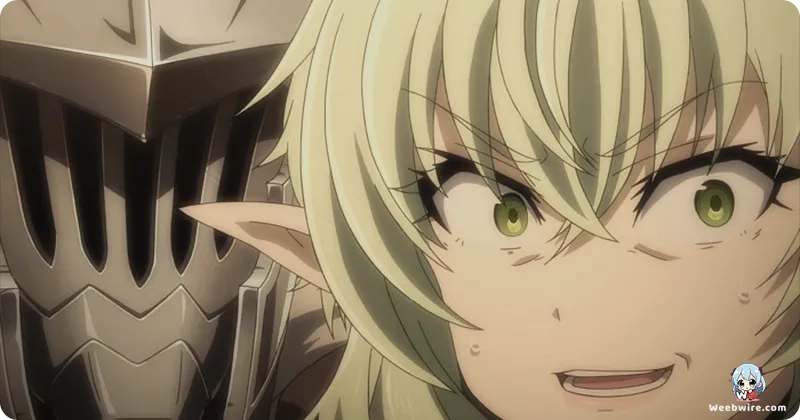Beyond the Gore: Unearthing the D&D Roots and Production Triumphs That Shaped GOBLIN SLAYER

While the anime GOBLIN SLAYER has garnered global attention for its relentlessly dark fantasy atmosphere and its brutally pragmatic depiction of combating low-level monstrous threats, the series' true brilliance extends far beyond its uncompromising violence. The adaptation, based on Kumo Kagyu's original work, captivated audiences by deliberately subverting traditional fantasy narratives, focusing instead on a protagonist whose identity is solely defined by his singular, relentless mission rather than any grand, predestined heroic arc. This commitment to functional anonymity and ruthless realism stands as one of the most compelling, yet frequently overlooked, aspects defining the show's unique appeal.
The Foundational Influence of Tabletop Role-Playing Games
A fascinating element underpinning GOBLIN SLAYER is its nearly obsessive dedication to the fundamental philosophical framework of tabletop role-playing games (TTRPGs), drawing specific inspiration from systems like Dungeons & Dragons. Unlike typical fantasy anime where protagonists often possess limitless stamina or inexplicable powers, Goblin Slayer and his team operate under stringent resource management constraints. Every action is calculated; every item is a critical, countable asset. Torches are not mere visual aids they are essential, finite resources.
Goblin Slayer's meticulous preparation stocking practical, non-magical gear such as oil, pitons, and ropes is a perfect dramatic reflection of a TTRPG player diligently managing inventory and spell slots before a difficult campaign session. Furthermore, the core adventuring unit is a direct homage to the classic, balanced D&D party: a Fighter (Goblin Slayer), a Cleric (Priestess), a Ranger/Druid (High Elf Archer), a Wizard/Sorcerer (Dwarf Shaman), and a Paladin/Cleric (Lizard Priest). The deliberate choice to refer to these characters only by their class or race further emphasizes this structural approach, positioning them as essential archetypes performing necessary functions within a perilous world, rather than traditional heroes burdened by complex personal histories.

Navigating Extreme Content at Studio WHITE FOX
The production journey undertaken by Studio WHITE FOX presented notable challenges, particularly regarding the handling of the source material's extreme content, which included unflinching depictions of violence and sexual assault in the initial manga chapters. Translating this grim reality for a broadcast television audience required calculated decisions regarding visual restraint. The studio earned praise for its high production quality and ability to maintain palpable tension, yet the team strategically employed quick cuts, shadow work, and precise framing to convey the narrative weight of these brutal events without violating regulatory standards.
This careful balance generated intense debate among fans, highlighting WHITE FOX's skill, which was previously demonstrated in complex works like Re:Zero and Steins;Gate, in preserving psychological horror despite visual constraints.
Yuichiro Umehara's Return and Production Resolve
Perhaps the most inspiring behind-the-scenes anecdote involves Yuichiro Umehara, the voice actor who delivers the titular character's iconic, gravelly performance. During the inaugural season's production in 2018, Umehara faced a sudden, severe health crisis, requiring hospitalization for acute disseminated encephalomyelitis (ADEM), a rare neurological disorder. This unforeseen event temporarily halted recording for the main lead, threatening the production timeline.
However, Umehara’s remarkable dedication and subsequent recovery allowed him to return and flawlessly complete the season. His resilience, coupled with the commitment of the entire production staff to navigate this serious disruption while maintaining the high standard of voice acting, remains a powerful testament to the team's professional resolve.
From Web Novel to Global Franchise
The series' origins are equally compelling, tracing back to the Japanese user-generated content platform Shōsetsuka ni Narō (Let's Become a Novelist), where Kumo Kagyu first published the story as a web novel. While this platform is a known incubator for hit light novel series, GOBLIN SLAYER rapidly distinguished itself through its grim premise and radical focus on the low-level, often overlooked terrors of a fantasy world. Its immediate and organic online popularity prompted SB Creative to formalize the publication into a light novel series, featuring illustrations by Noboru Kannatuki.
This trajectory from a simple, self-published online concept to a global multimedia franchise adapted by a major studio underscores how genuinely unique, rule-breaking concepts can seize the cultural zeitgeist. The profound impact of the series, especially its shocking debut episode, cemented its status as a defining dark fantasy work of the decade, proving that the most terrifying evil is often the small, persistent threat that society chooses to ignore.
Credits
GOBLIN SLAYER
Author
Kumo Kagyu
Cover Art
Noboru Kannatuki
Studio
WHITE FOX
Publisher
SB Creative
Producers





